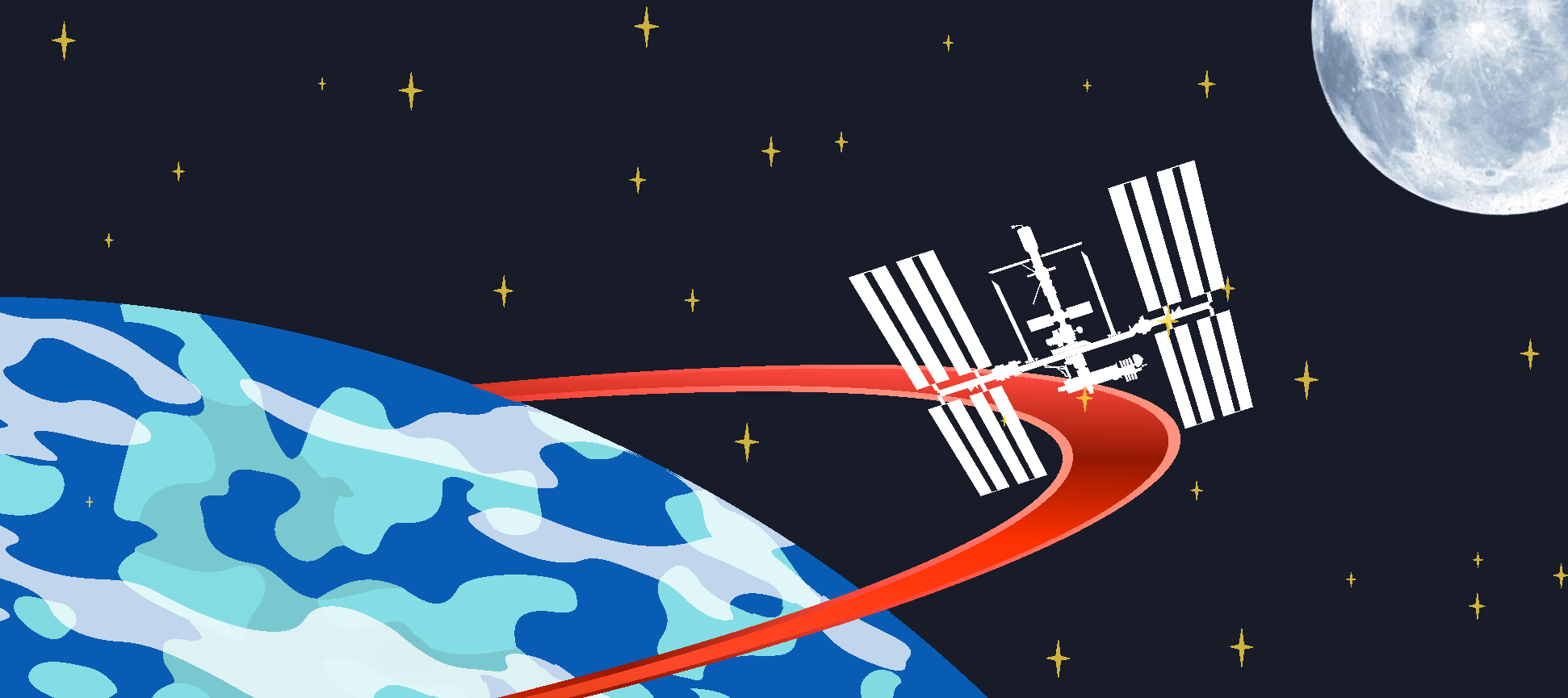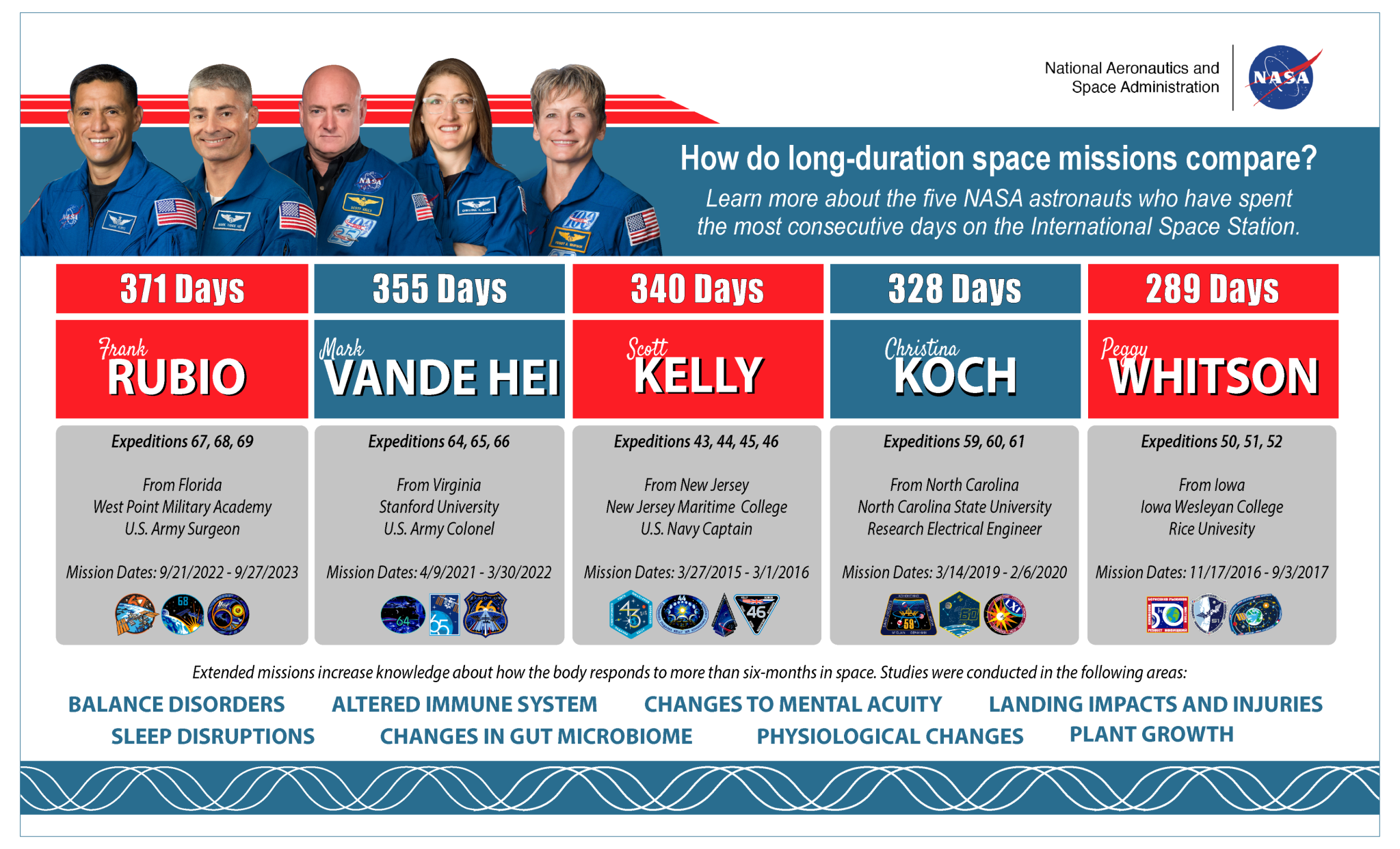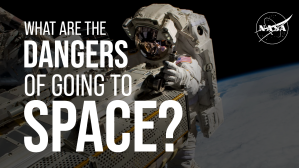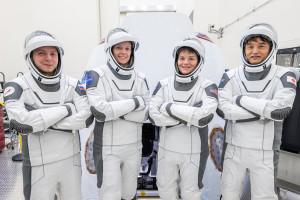Key Messages
1. Extended-duration missions on the International Space Station are steppingstones to future missions to the Moon and Mars.
- Frank Rubio has joined Mark Vande Hei, Scott Kelly, Christina Koch, Peggy Whitson, as American explorers to spend an extended amount of time on the space station.
- Research from extended-duration missions builds upon the foundation of data from six-month missions.
- NASA is identifying human research studies for future one-year missions.
2. Rubio, Vande Hei, and Koch’s missions are built on the foundation of the Standard Measures study, a uniform approach to measuring the effects of spaceflight on the human body. This study:
- Helps to define “normal” reaction and adaptation in space.
- Monitors the effectiveness and interactions of measures to counter spaceflight effects.
- Provides a consistent understanding of how the human body changes in space.
3. Rubio is:
- The first NASA astronaut to spend more than a year in space
- The first astronaut to participate in a study examining how exercising with limited gym equipment affects the human body, since future crews to the Moon and Mars will not have enough room in their spacecraft for a treadmill. Rubio exercised only on the space station’s bicycle and weightlifting machine.
4. Rubio and Vande Hei participated in a study to help researchers test whether an enhanced spaceflight diet can help humans better adapt to life in space. Vande Hei was the first extended subject for this study.
5. Rubio, Vande Hei, and Koch also:
- Helped nurture and monitor vegetables produced in the space station’s Vegetable Production System, or Veggie. Future deep space missions will require astronauts to grow fresh food in space as an alternative to prepackaged food.
- Provided biological samples that have been frozen and archived for future life science studies.
- Gave feedback about any injuries like bruises acquired due to the forces of landing in the Soyuz spacecraft. This feedback will
- Provide insight into whether extended spaceflight missions make people more vulnerable to injuries.
- Help improve the design and landing systems of future spacecraft.
5. Whitson participated in studies that were also performed by Kelly, such as Biochemical Profile, Field Test, and NeuroMapping, all of which had measures that are now part of the Standard Measures study.
6. Kelly’s mission demonstrated the resilience and robustness of how a human body can adapt to a multitude of changes induced by the spaceflight environment.
- 91.3% of Scott’s gene expression levels returned to a normal baseline within six months of landing.
- The flu vaccine administered in space worked exactly like it would on Earth — Scott’s body reacted the same.
____
NASA’s Human Research Program, or HRP, pursues the best methods and technologies to support safe, productive human space travel. Through science conducted in laboratories, ground-based analogs, and the International Space Station, HRP scrutinizes how spaceflight affects human bodies and behaviors. Such research drives HRP’s quest to innovate ways that keep astronauts healthy and mission-ready as space travel expands to the Moon, Mars, and beyond.

































